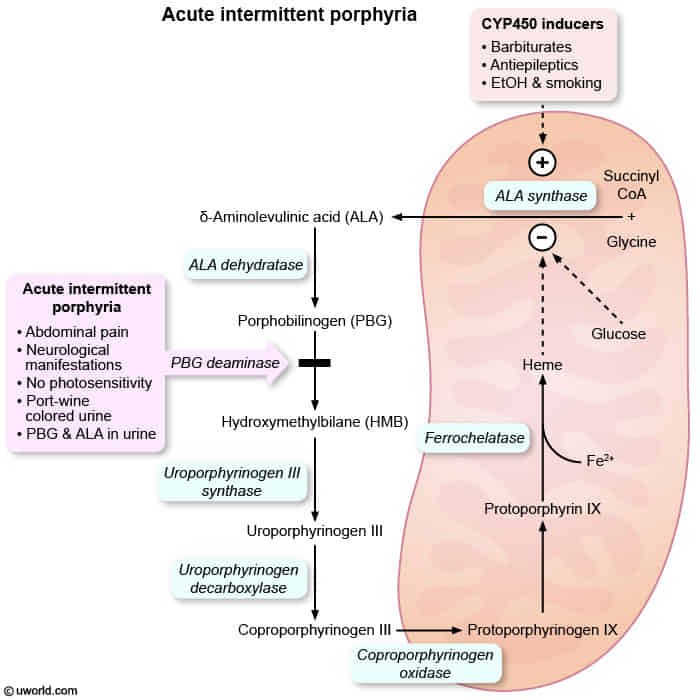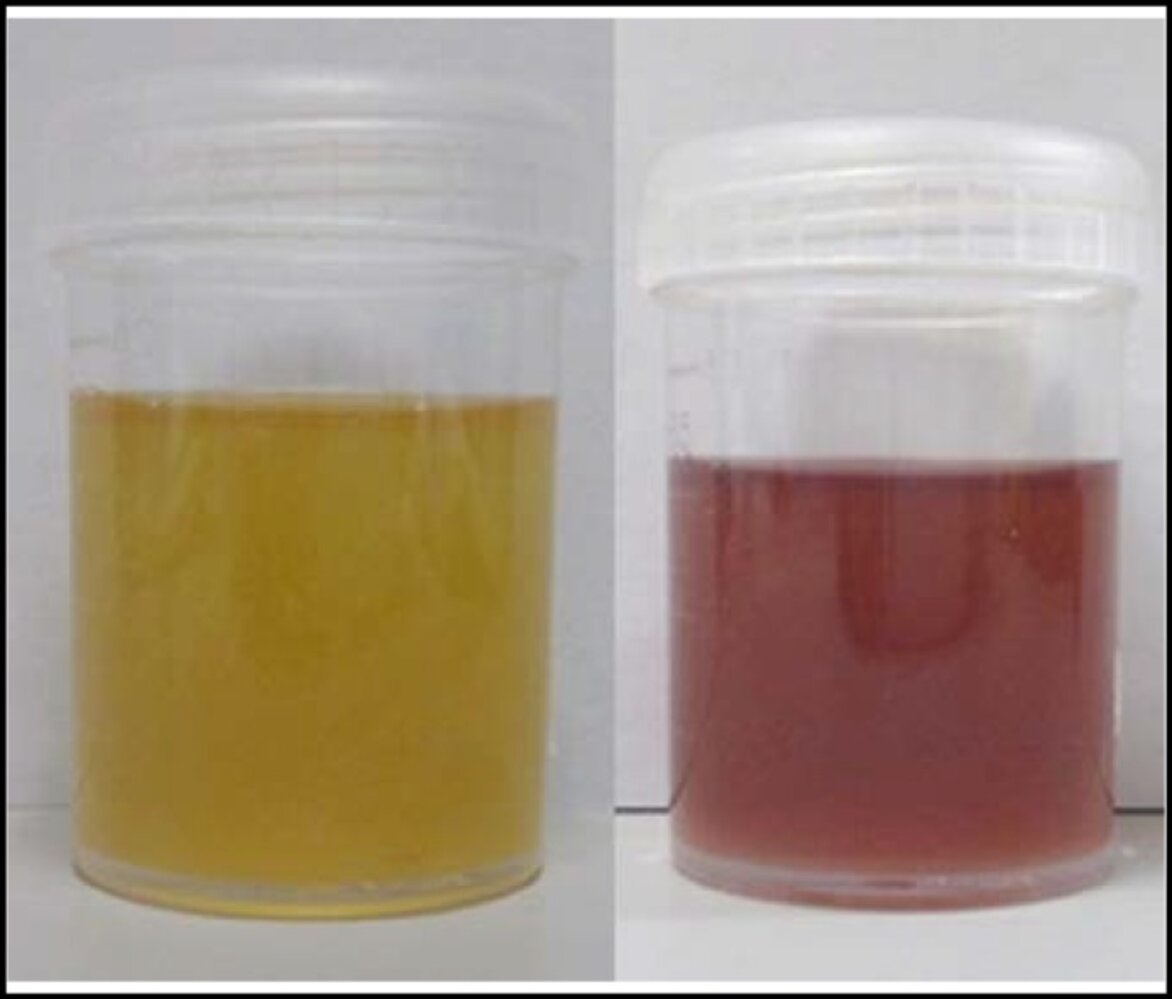Epidemiology
Etiology

- Autosomal dominant gene mutation, with variable penetrance
- Trigger → ↑ heme demand and biosynthesis → impaired enzyme activity due to a mutation of porphobilinogen deaminase (PBG-D) (previously known as uroporphyrinogen I synthase) → accumulation of heme intermediates porphobilinogen (PBG) and δ-aminolevulinic acid (ALA) → symptoms
- ALA and it’s derivates are neurotoxic
Triggers
Most triggers increase the demand for hepatic heme, thereby stimulating heme biosynthesis, which, in the setting of an AIP enzyme mutation, results in the accumulation of heme intermediates.
- Medications (especially inducers of hepatic cytochrome P450 enzymes, which are used in the biosynthesis of heme), including:
- Anticonvulsants (e.g., barbiturates, phenytoin)
- Sulfonamides
- Anesthetics
- Hormone therapy
- Alcohol
- Smoking
- Fasting
- Increase gluconeogenesis in liver, which also increase heme production
Clinical features
The clinical presentation of AIP is variable and symptoms are often nonspecific. In contrast to some porphyrias, there are no dermatological findings.
- Acute attacks
- GI symptoms: severe abdominal pain, nausea, vomiting, constipation
- Neurogenic, not infectious or inflammatory.
- Neurological abnormalities: polyneuropathies (nonspecific pain, weakness/fatigue, paresthesia, paresis), seizures, respiratory paralysis
- Autonomic dysfunction: tachycardia, hypertension
- Psychiatric abnormalities: hallucinations, disorientation, anxiety, insomnia
- Red-purple urine
- Due to the accumulation of porphyrins and/or bilirubin in urine.

- Porphyria is from the Greek “porphyros,” meaning purple. Urine may also turn black after prolonged exposure to sunlight.
- Due to the accumulation of porphyrins and/or bilirubin in urine.
- GI symptoms: severe abdominal pain, nausea, vomiting, constipation
Mnemonic
The 5 P’s of acute intermittent porphyria: Painful abdomen, Polyneuropathy, Psychologic disturbances, Port wine-colored pee, Precipitated by triggers like drugs or alcohol
Tip
The skin is not involved in acute intermittent porphyria.
Diagnostics
| Feature | Acute Intermittent Porphyria (AIP) | Porphyria Cutanea Tarda (PCT) |
|---|---|---|
| Enzyme | Porphobilinogen (PBG) Deaminase | Uroporphyrinogen Decarboxylase (UROD) |
| Accumulation | ALA & PBG | Uroporphyrin |
| Property | Neurotoxic | Photosensitizing |
| Presentation | Neurovisceral (5 P’s): - Painful Abdomen - Polyneuropathy - Psychological sx - Port-wine urine - Precipitated by drugs | Photosensitivity: - Blisters & Bullae - Skin fragility - Hypertrichosis |
| Triggers | CYP450 Inducers, Fasting | Alcohol, Hep C, ↑ Iron, Estrogen |
| Tx | IV Heme, Glucose (Dextrose) | Phlebotomy, Hydroxychloroquine |
Treatment
- Hemin therapy
- Heme is unstable in aqueous solutions. It rapidly oxidizes to hemin (Fe3+) and further degrades. Hemin is oxidized form of heme (Fe2+ → Fe3+), more stable.
- Start as soon as possible
- Mechanism: Hemin is an iron-containing porphyrin that decreases the activity of δ-aminolevulinate synthase, thereby decreasing heme biosynthesis and the accumulation of intermediates.
- Glucose loading: consider only for mild attacks or as temporizing measure